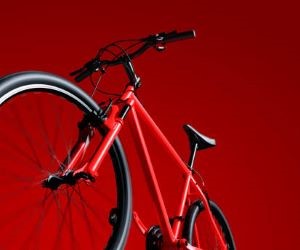Learn how to deal with punctures on long rides with prevention tips, repair techniques, and smart gear choices to keep rolling without stress.
HOW DO I CHOOSE THE BEST SHOW FOR CYCLING FOOTAGE INSPIRATION?
Cycling footage is more than entertainment—it’s a wellspring of creative inspiration. Whether you’re an amateur videographer capturing weekend rides or a content creator producing cinematic cycling films, the right shows can shape your style. With countless options, from Tour de France broadcasts to adventure documentaries, how do you pick the one that truly sparks ideas? This guide breaks down the types of shows that deliver the most value for cycling footage inspiration, highlighting what to look for in terms of cinematography, storytelling, and technique.

Understanding different types of shows
Cycling shows come in many forms, and each offers a different kind of inspiration. By analyzing categories such as professional race coverage, adventure travel documentaries, and behind-the-scenes features, you can align your viewing with your creative goals.
Professional race coverage
Tour de France, Giro d’Italia, and Vuelta a España broadcasts provide high-end production quality with aerial shots, on-bike cameras, and expert commentary. They showcase the drama of competition while offering technical inspiration, especially when it comes to framing fast-paced action and capturing sweeping landscapes.
High-quality aerial drone and helicopter shots
Dynamic close-ups of riders in motion
Live editing and commentary rhythm
Adventure and travel documentaries
Shows like “The Impossible Ride” or “Long Way Up” mix cycling with exploration. They focus less on competition and more on landscapes, human challenges, and cultural encounters. For creators, these shows inspire narrative-driven content and creative use of natural lighting and terrain.
Behind-the-scenes and lifestyle shows
Content such as “EF Gone Racing” brings personality and intimacy, with footage of riders preparing, traveling, and living the cycling lifestyle. This type of storytelling emphasizes emotional engagement and authenticity, making it a strong model for vlog-style cycling films.
Analyzing cinematography techniques
Great cycling shows aren’t just about the subject—they’re about how it’s filmed. By studying cinematography choices, you can learn how to elevate your own footage. Look for shot variety, camera movement, and editing rhythms that align with your creative vision.
Shot composition and variety
Professional shows mix wide establishing shots, close-ups, and tracking shots to build immersion. Notice how camera operators transition between shots to keep pacing dynamic. For your own work, incorporating multiple angles avoids monotony and keeps viewers engaged.
Wide shots capture scale and environment
Close-ups emphasize emotion and detail
Tracking shots maintain energy and flow
Use of technology
Modern cycling shows integrate drones, on-bike cameras, and gimbals for smooth footage. These tools create perspectives that traditional handheld shots can’t achieve. Watching how shows deploy these technologies can guide your investment in equipment and techniques.
Editing and pacing
Editing sets the mood. Fast cuts suit sprints and attacks, while long takes highlight endurance and scenery. Pay attention to how music is used alongside pacing—it often dictates emotional tone. Borrowing these cues can elevate your storytelling.
Choosing the right inspiration
Not every show is right for every creator. Choosing the best source of inspiration depends on your style, goals, and audience. Ask yourself what kind of cycling story you want to tell before deciding what to watch and learn from.
Match shows to your goals
If you’re filming fast-paced racing content, study professional broadcasts. If you’re making travel films, prioritize adventure documentaries. For personal or lifestyle content, look at behind-the-scenes shows that emphasize character and authenticity.
Race coverage = action and speed inspiration
Adventure documentaries = narrative and landscape ideas
Lifestyle shows = emotional and personal storytelling
Evaluating production quality
Pay attention to which shows maintain high production standards. Sharp resolution, clean audio, and consistent framing signal professionalism. While you don’t need Hollywood-level gear, learning from polished productions helps you refine your own visual storytelling.
Developing your unique style
Inspiration should be a starting point, not a blueprint. Blend techniques you admire with your personal perspective. Experiment with what resonates—maybe aerial drone shots, maybe intimate handheld sequences. The goal is to create cycling footage that feels uniquely yours while standing on the shoulders of the greats.
By critically choosing shows that match your goals, analyzing cinematography, and adapting lessons into your own work, you’ll evolve from simply consuming cycling footage to creating content that inspires others in turn.
YOU MAY ALSO BE INTERESTED






